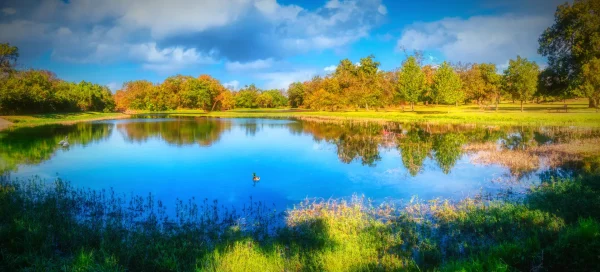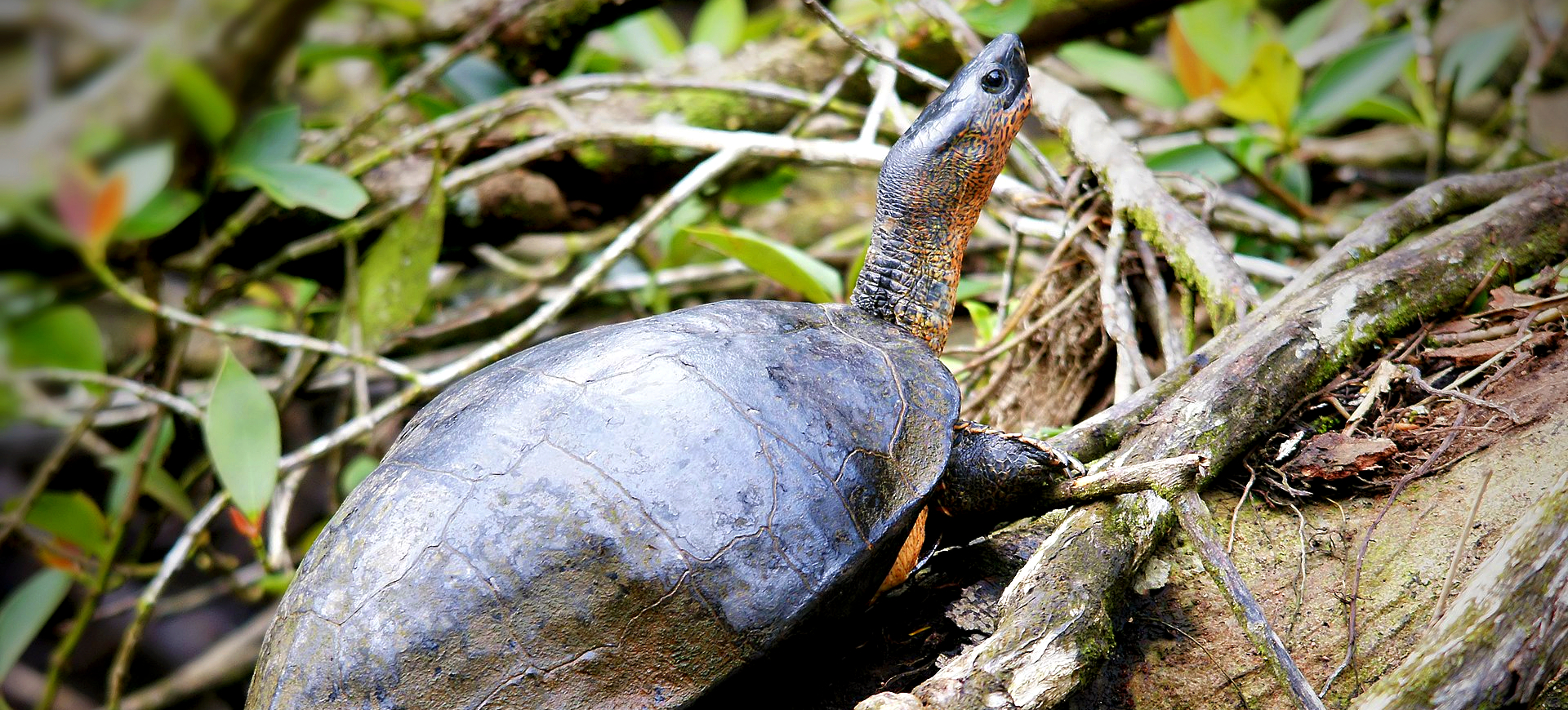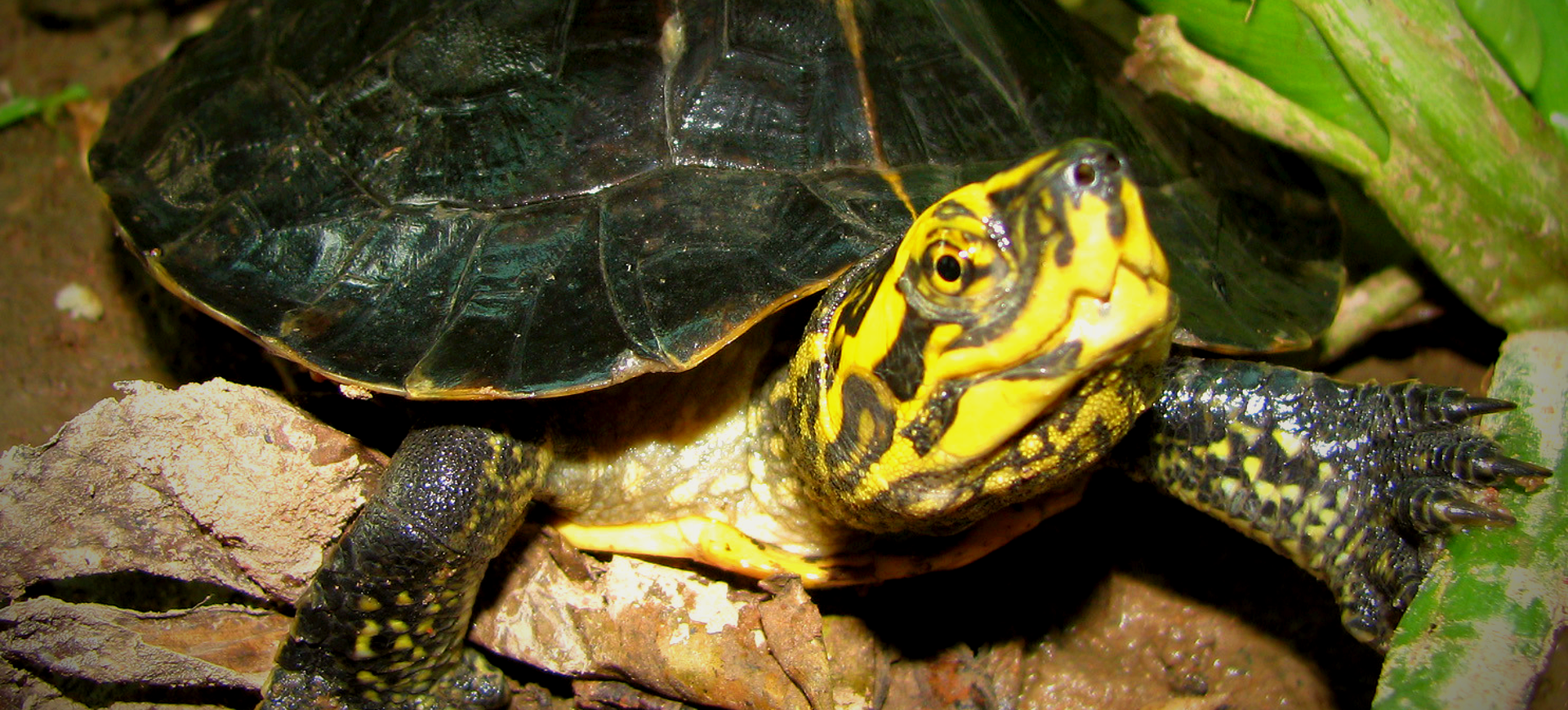Overview
The Painted Terrapin, scientifically known as Batagur borneoensis, is a unique and critically endangered freshwater turtle native to Southeast Asia. This species is particularly known for its striking sexual dimorphism, especially during the breeding season. Male Painted Terrapins develop vibrant colors on their heads, with bright red and black patterns, which contrast with their otherwise more subdued olive-green shell and white to pale yellow plastron. Females and non-breeding males are less colorful, with a predominantly greyish-green shell and a more uniform head color.
The Painted Terrapin inhabits brackish water environments such as estuaries, rivers, and mangroves, which play an important ecological role. It is an omnivorous species, feeding on various aquatic plants, fish, and small invertebrates. This dietary diversity helps maintain the balance in their ecosystems by controlling vegetation and small aquatic animal populations. The Painted Terrapin is also known for its unique nesting behavior, where females lay eggs on sandy riverbanks, often traveling significant distances to find suitable nesting sites.
The conservation of the Painted Terrapin is of great concern due to its critically endangered status. Threats to this species include habitat destruction, especially the loss of nesting beaches and mangrove forests, and illegal poaching for meat and pet trade. The protection of their habitats and the enforcement of wildlife protection laws are crucial for the survival of this species. Conservation efforts for the Painted Terrapin involve habitat restoration, captive breeding programs, and community-based conservation initiatives.
Taxonomy
Kingdom
Phylum
Class
Order
Family
Genus
Species
Type
Physical Description:
The Painted Terrapin’s physical appearance is characterized by its distinctive shell and head coloration, particularly in males during the breeding season. The male’s head transforms with vivid red and black markings, starkly contrasting its olive-green carapace (upper shell) and light-colored plastron (lower shell). The female and non-breeding male Painted Terrapins have a more uniform greyish-green shell, lacking the dramatic head colors seen in breeding males. Both sexes have a robust and somewhat flattened shell, adapted to their brackish water habitats.
In terms of size, Painted Terrapins are one of the larger freshwater turtle species in their native range. They possess strong, webbed feet suitable for swimming in their aquatic environments. The overall physique of the Painted Terrapin is built for an aquatic lifestyle, with a streamlined shell that aids in swimming and a powerful jaw for crushing and consuming various food sources. The striking appearance of the Painted Terrapin, especially during the breeding season, makes it one of the most visually distinctive turtles in its region.

Lifespan: Wild: ~25 years || Captivity: ~25 years

Weight: Male: 13-15 lbs (6-7 kg) || Female: 13-15 lbs (6-7 kg)

Length: Male: 16-20 inches (40-50 cm) || Female: 16-20 inches (40-50 cm)

Top Speed: Unknown
Characteristic:
Native Habitat:
The Painted Terrapin is native to the coastal regions of Southeast Asia, including Indonesia, Malaysia, Thailand, and Vietnam. Their preferred habitats are brackish water environments such as estuaries, tidal rivers, and mangrove swamps. These habitats provide the necessary resources for feeding, breeding, and shelter. The availability of clean water, abundant food, and suitable nesting sites influences the Painted Terrapin’s habitat choice.
During breeding, females seek sandy riverbanks or beaches to lay their eggs. These nesting sites are often far from their usual habitats, requiring the females to undertake long, arduous journeys. The quality and availability of these nesting sites are critical for the successful reproduction of the species. The conservation of their aquatic habitats and nesting beaches is essential for the survival of the Painted Terrapin.
Climate Zones:
Biomes:
WWF Biomes:
Biogeographical Realms:
Continents:
Diet:
Diet & Feeding Habits:
The Painted Terrapin is an omnivorous species with a diet that includes aquatic vegetation, fruits, fish, and small invertebrates. This varied diet is important for the health of their ecosystems, as it helps control the population of small aquatic animals and vegetation growth. They forage for food in their brackish water habitats, using their strong jaws to crush and consume hard-shelled prey. The Painted Terrapin’s feeding habits are an integral part of its role in the ecological balance of its habitat.
In the wild, Painted Terrapins adjust their diet according to the availability of food sources, which can vary seasonally and with habitat changes. During the breeding season, the nutritional demands of females increase, influencing their foraging behavior and diet composition. The species’ omnivorous diet and adaptive feeding strategies are key to survival in Southeast Asia’s diverse and changing environments. The conservation of their habitats, including preserving food sources, is crucial for the sustenance of Painted Terrapin populations.
Mating Behavior:
Mating Description:
The Painted Terrapin exhibits a unique and conspicuous mating behavior, especially notable in males. During the breeding season, males develop bright red and black markings on their heads to attract females, an unusual display among freshwater turtles. These vibrant colors are thought to play a role in mate selection, with females possibly choosing mates based on the intensity of their coloration. The nesting process involves females traveling to sandy banks to lay eggs, often at night, to avoid predators.
Once a suitable mate is found, Painted Terrapins engage in aquatic courtship and mating. The female’s choice of nesting site is critical for the survival of the offspring, as it must protect from predators and suitable conditions for egg incubation. After laying eggs, the female returns to the water, leaving the eggs to incubate independently. The conservation of nesting beaches is as important as protecting their aquatic habitats to ensure the reproductive success of the Painted Terrapin.
Reproduction Season:
Birth Type:
Pregnancy Duration:
Female Name:
Male Name:
Baby Name:
Social Structure Description:
The Painted Terrapin exhibits a solitary nature, with individuals typically interacting only during the breeding season. Outside of breeding, they are mostly independent, each foraging and inhabiting their territories. Understanding the social behavior of Painted Terrapins is important for conservation efforts, as it provides insights into their habitat use and reproductive strategies. The solitary nature of the species underscores the importance of protecting individual habitats and ensuring sufficient resources for each terrapin.
During the breeding season, males display vibrant colors to attract females, indicating a temporary increase in social interaction. Females independently seek out nesting sites, often traveling long distances to find suitable locations. Studying their social and reproductive behavior is crucial for developing effective conservation strategies. Protecting the individual habitats of these solitary animals is essential for their survival and the overall health of their populations.
Groups:
Conservation Status:
Population Trend:
The Painted Terrapin is currently classified as Critically Endangered, with its wild population facing a significant decline. The primary reasons for this decline include habitat destruction, particularly the loss of nesting beaches and mangrove forests, illegal meat poaching, and the pet trade. Accurate population counts are challenging due to their elusive nature and fragmented distribution. Conservation efforts are focused on protecting their habitats, enforcing wildlife protection laws, and raising awareness about the species’ plight.
The survival of the Painted Terrapin in the wild is contingent on effective conservation strategies. These strategies include habitat restoration, captive breeding programs, and community-based conservation initiatives. Research into their reproductive biology, habitat requirements, and threats is essential for developing targeted conservation actions. Collaborative efforts involving governments, conservation organizations, and local communities are crucial for recovering Painted Terrapin populations.
Population Threats:
The main threats to the Painted Terrapin include habitat loss and degradation due to human activities such as coastal development, pollution, and agricultural expansion. The destruction of nesting beaches and mangrove forests directly impacts their breeding success and survival. Illegal poaching for meat and the pet trade also pose a significant threat, leading to decreased numbers. Climate change is an emerging concern, as it could further alter their habitats and affect their reproductive patterns.
Addressing these threats requires a multifaceted approach, including habitat protection and restoration, strict enforcement of wildlife protection laws, and community engagement. Mitigating the impact of climate change and controlling illegal trade are also important aspects of conservation efforts. Public education and awareness campaigns are essential to increase support for conservation initiatives and reduce human-induced pressures on Painted Terrapin habitats.
Conservation Efforts:
Conservation efforts for the Painted Terrapin are focused on habitat protection and restoration, particularly of nesting beaches and mangrove forests. These efforts include establishing protected areas, implementing sustainable coastal development practices, and restoring degraded habitats. Captive breeding programs play a crucial role in increasing the population of Painted Terrapins and reintroducing them into the wild. Community-based conservation initiatives are also important, as they involve local communities in protecting and monitoring Painted Terrapin habitats.
Educational programs and awareness campaigns are vital for raising public understanding of the importance of Painted Terrapins and the threats they face. Research on their ecology, behavior, and threats is essential for informing conservation strategies. International collaboration is important for addressing the challenges faced by this migratory species. A combination of scientific research, habitat protection, and community engagement is key to successfully conserving the Painted Terrapin.
Additional Resources:
Fun Facts
- The Painted Terrapin’s name comes from the striking colors displayed by males during the breeding season.
- They are one of the few turtle species where males undergo a dramatic color change for mating.
- Painted Terrapins can travel long distances between their aquatic habitats and nesting sites.
- Their diet plays a crucial role in maintaining the balance of aquatic ecosystems.
- The species is known for its strong swimming ability, adapted to life in brackish water environments.
- Conservation efforts for the Painted Terrapin also benefit other species sharing their habitats.
- They have a unique nesting behavior, with females laying eggs on sandy riverbanks or coastal areas.
- Painted Terrapins are an indicator species for the health of estuarine and mangrove ecosystems.
- Their critical endangered status highlights the urgent need for conservation action.
- Community involvement in conservation efforts is key to protecting the Painted Terrapin and its habitat.








